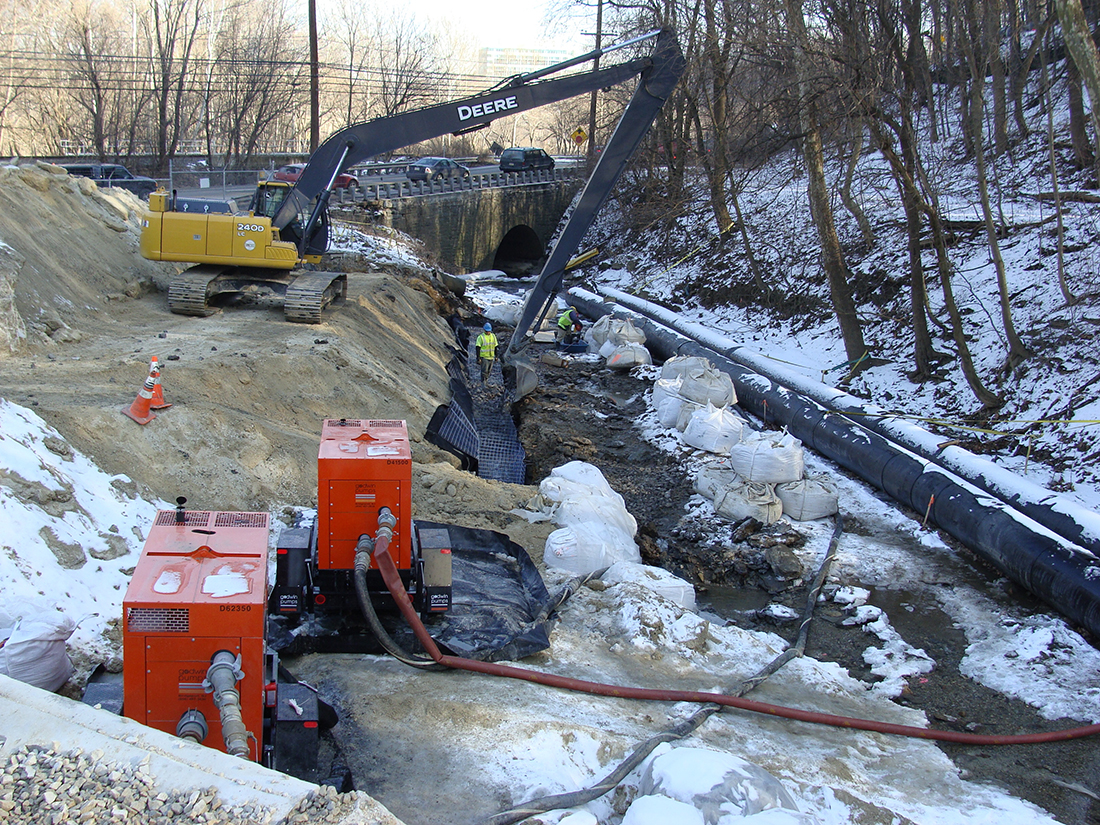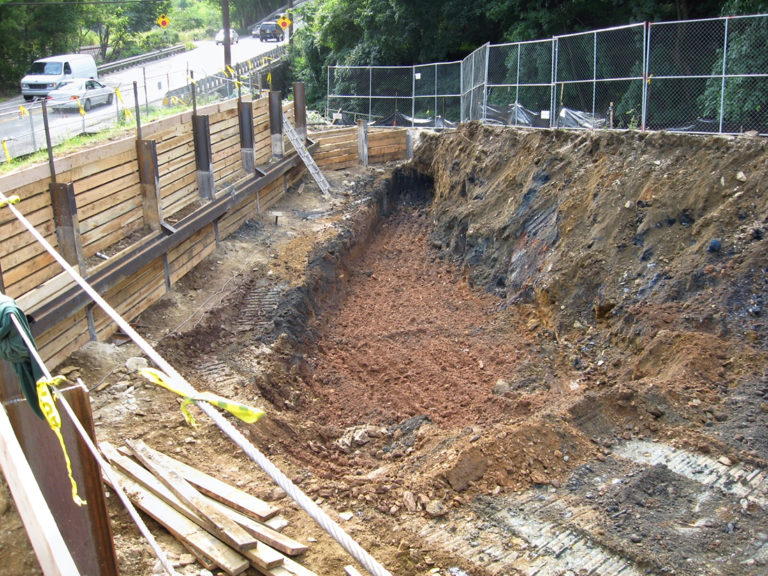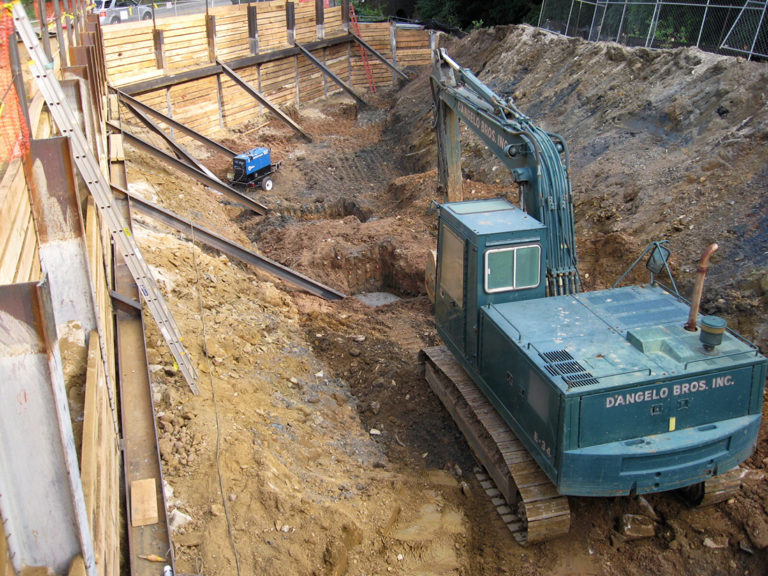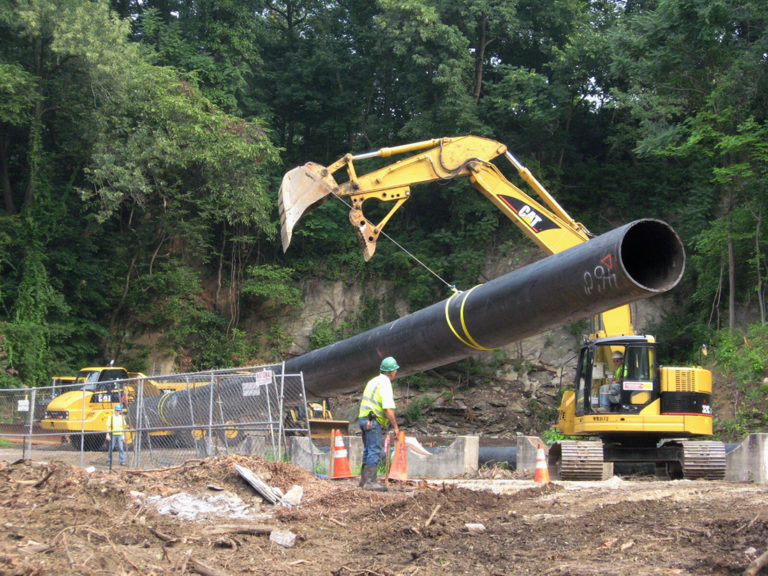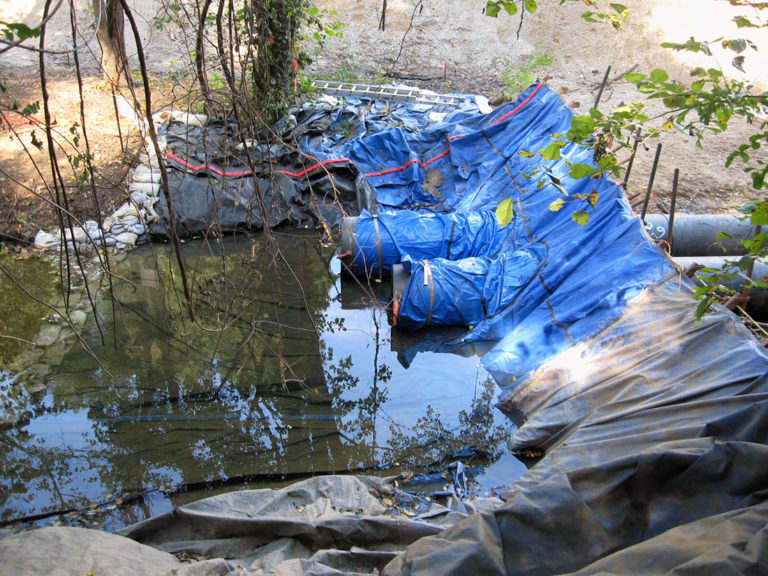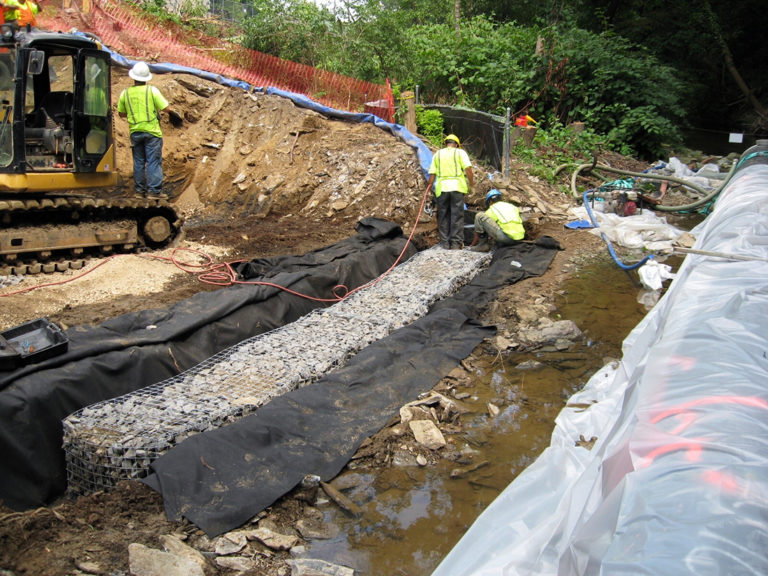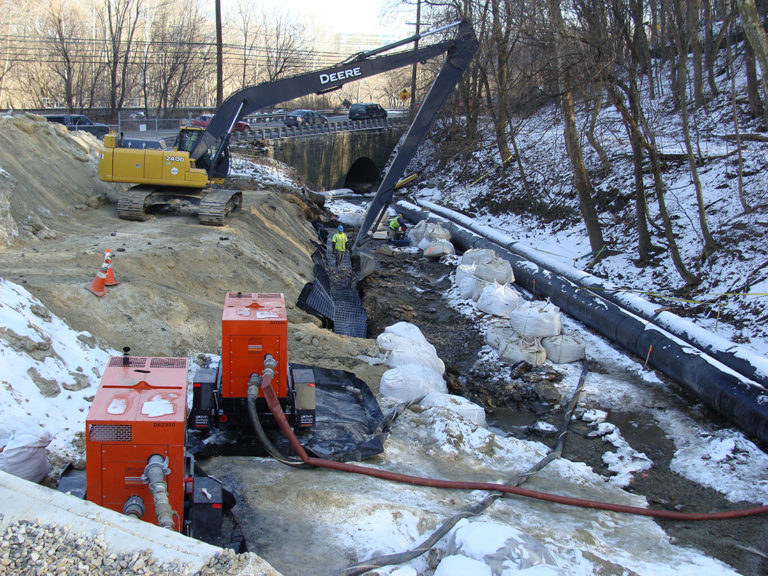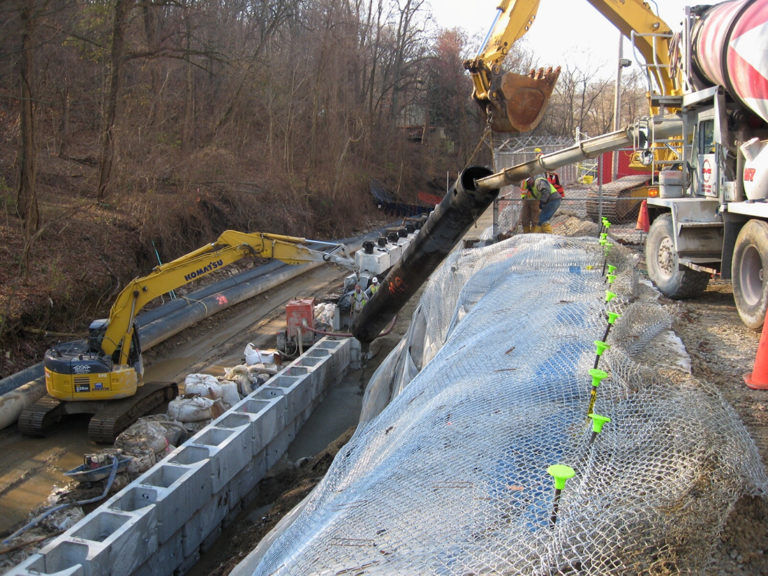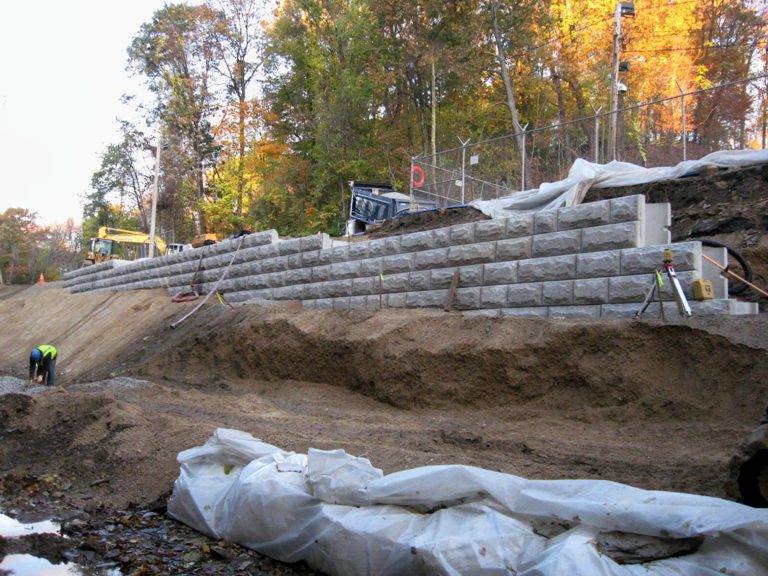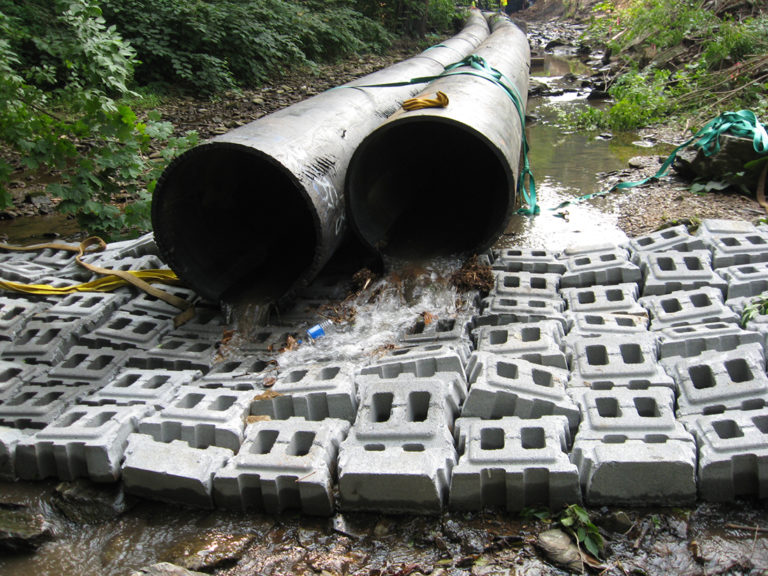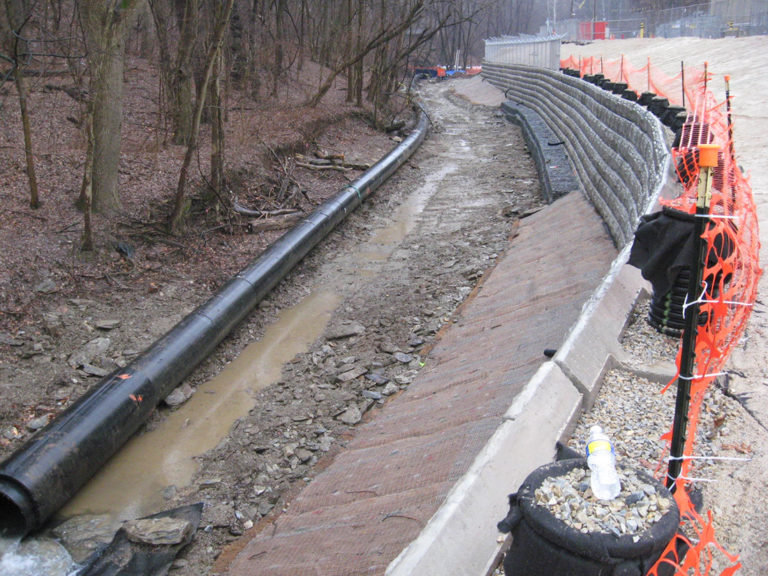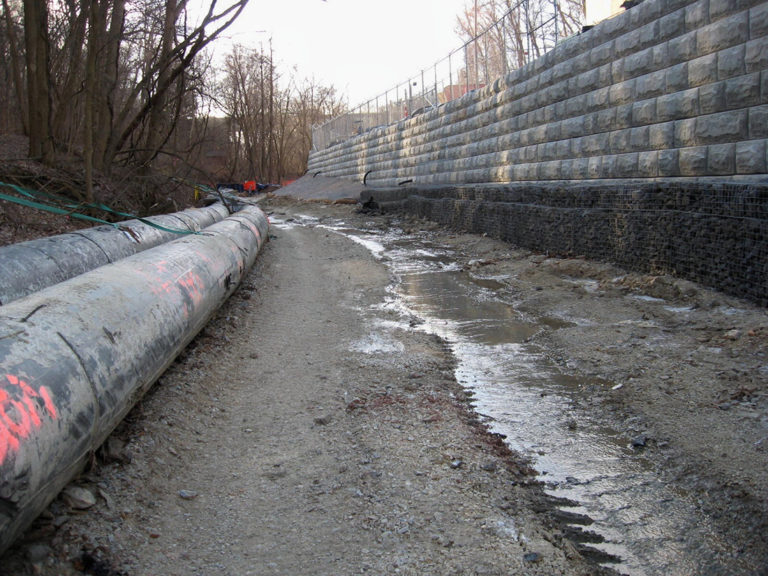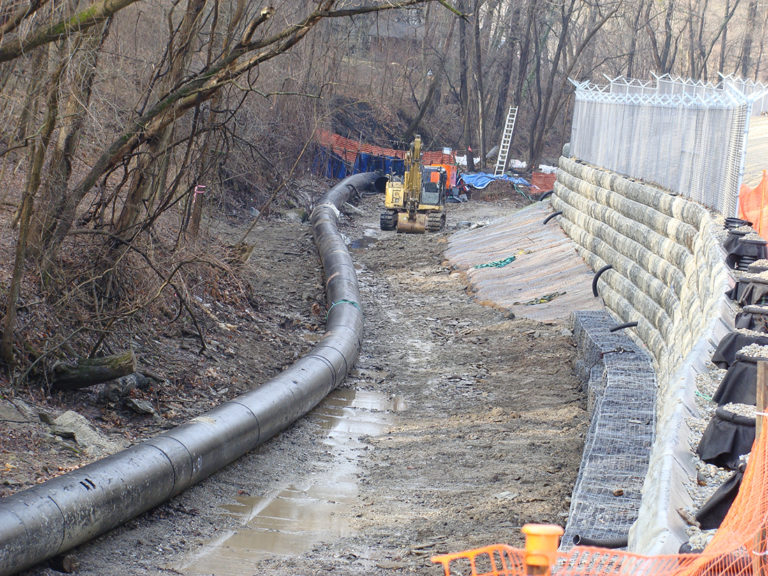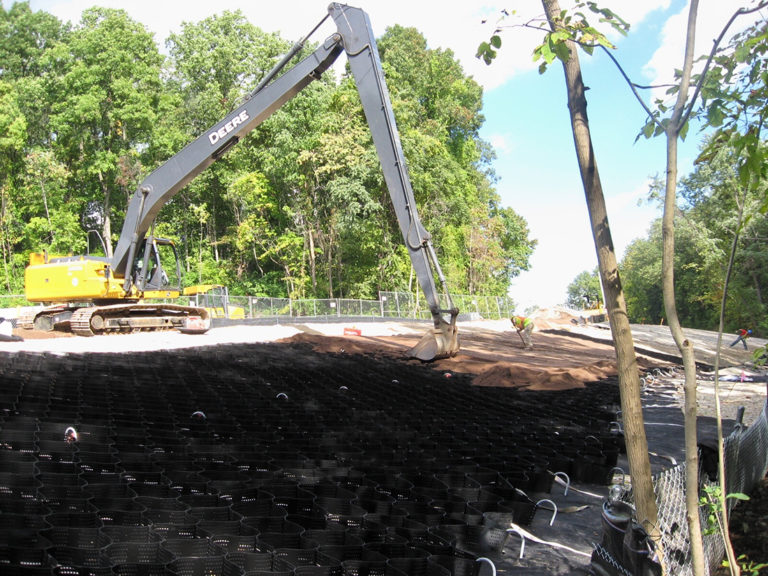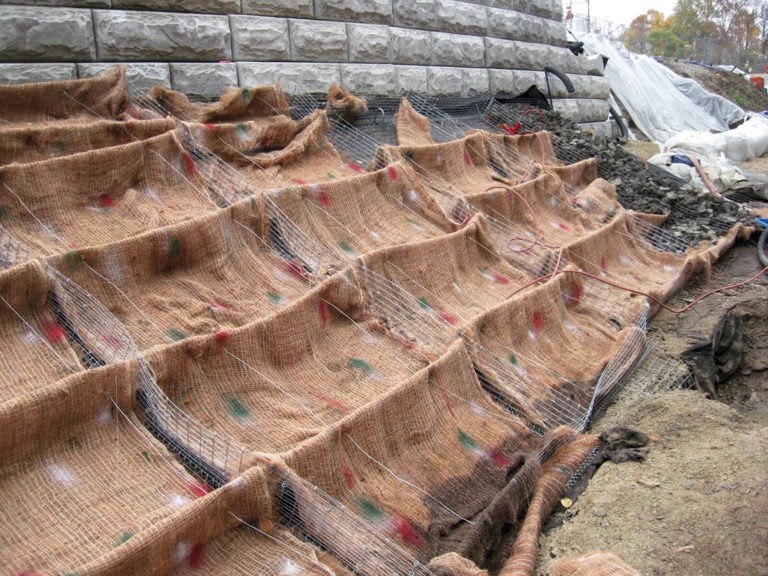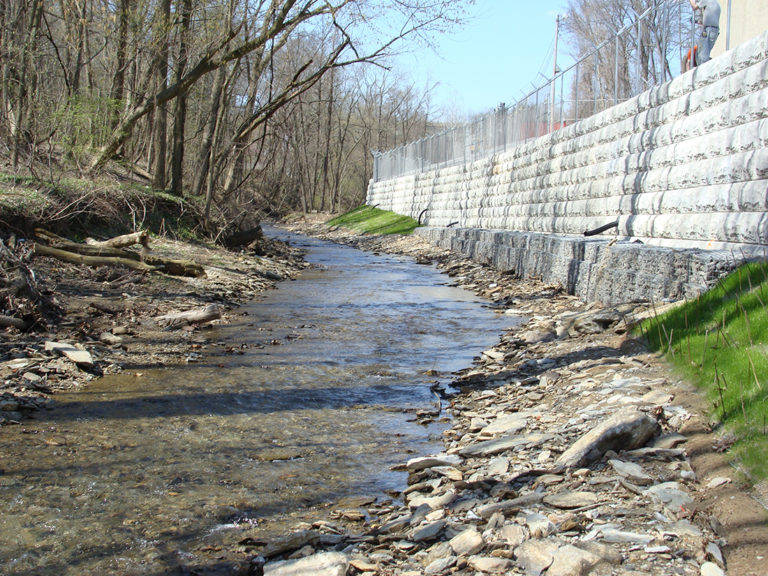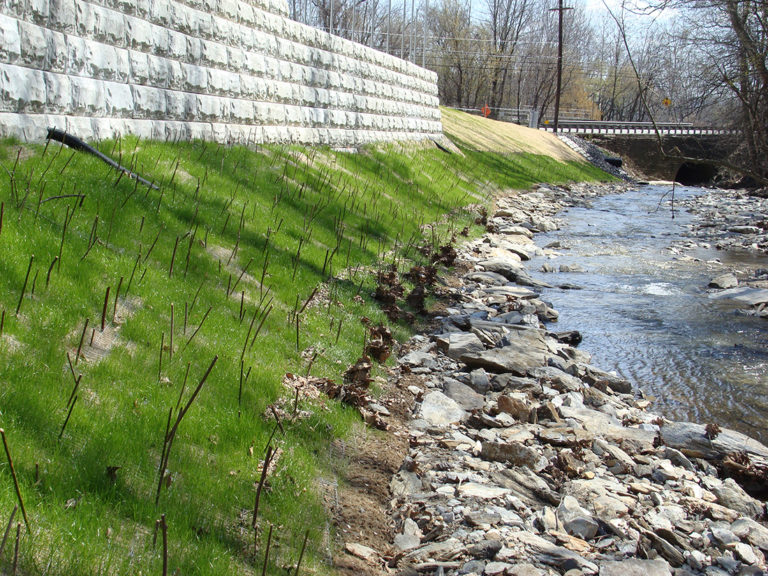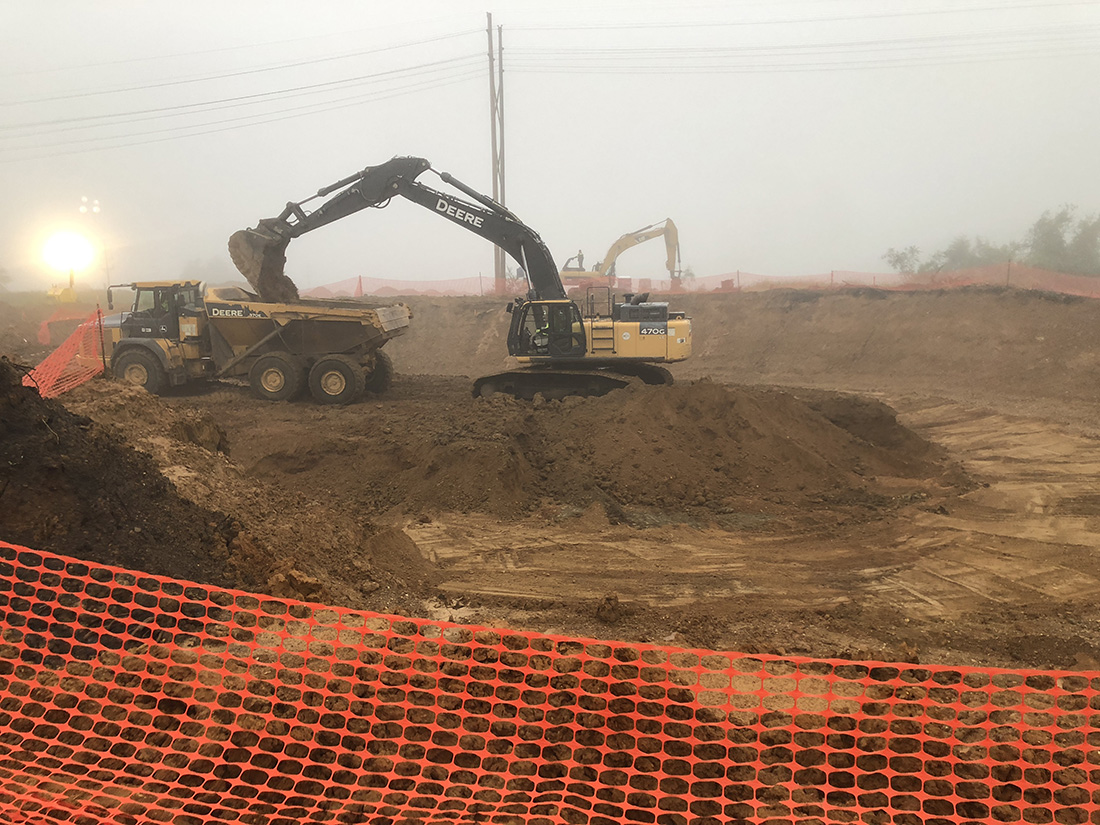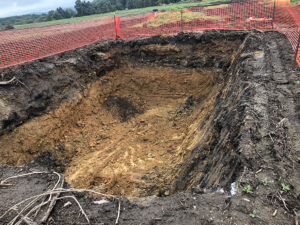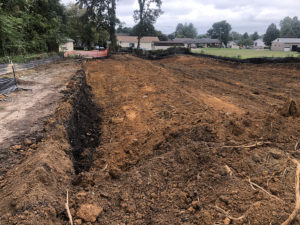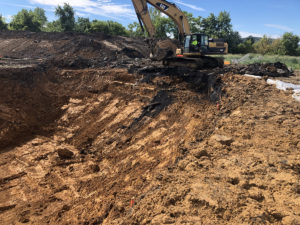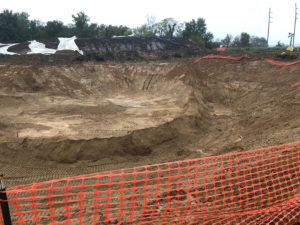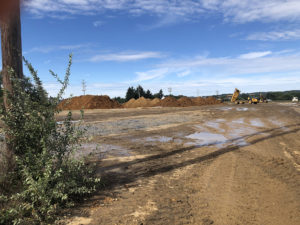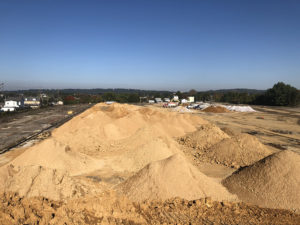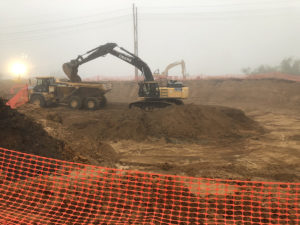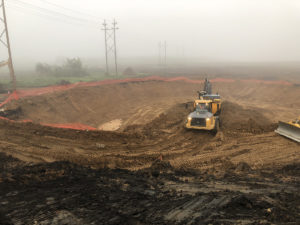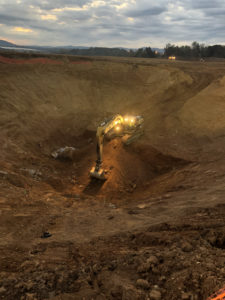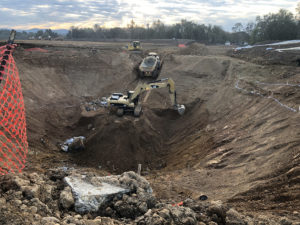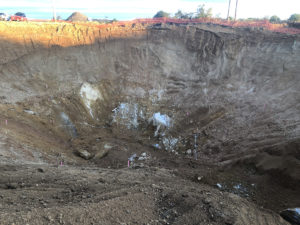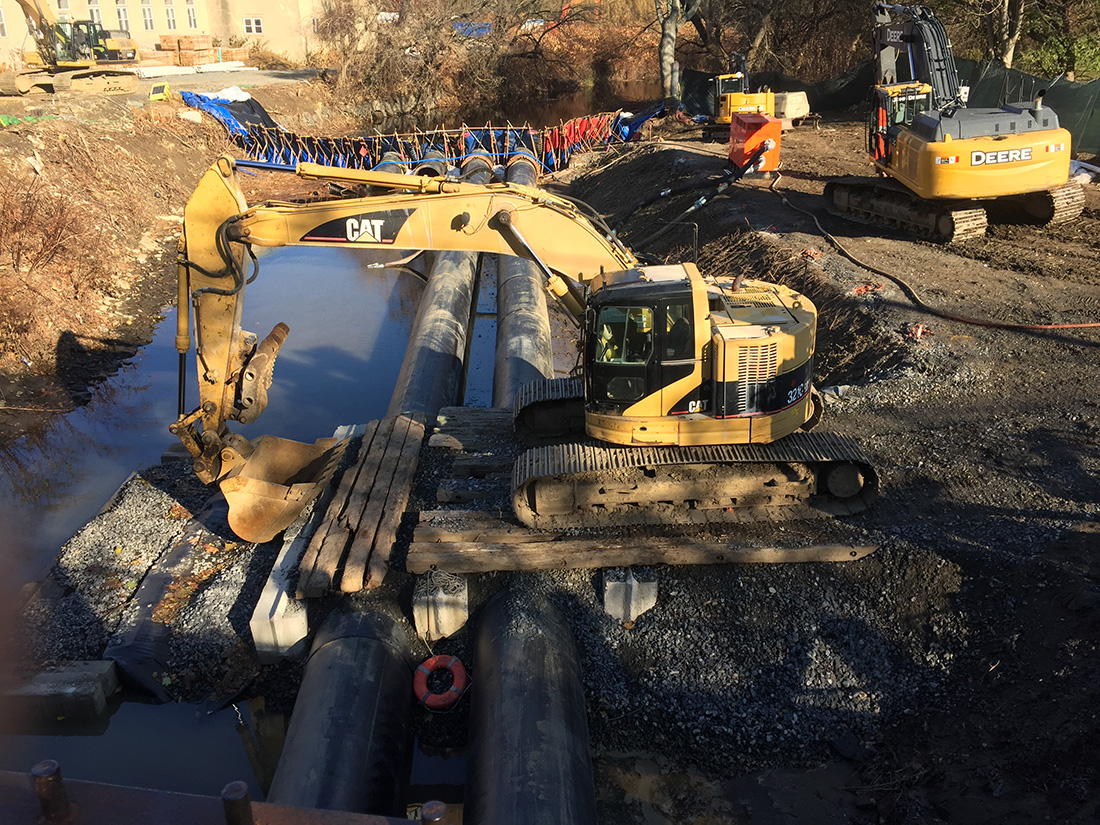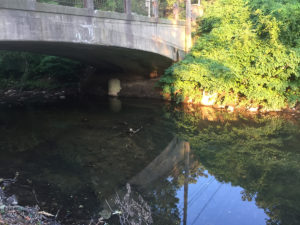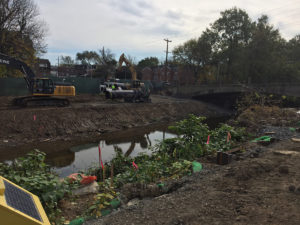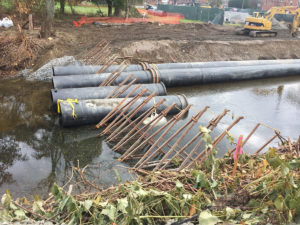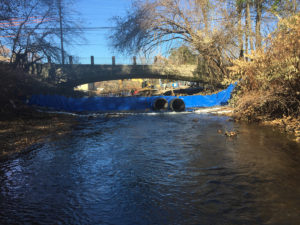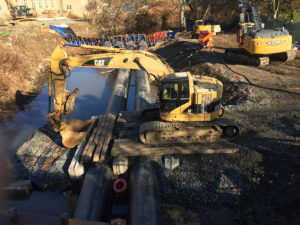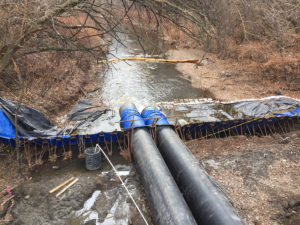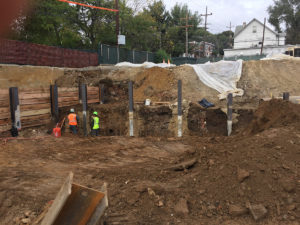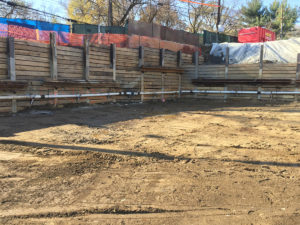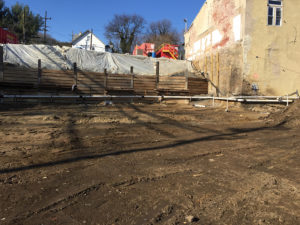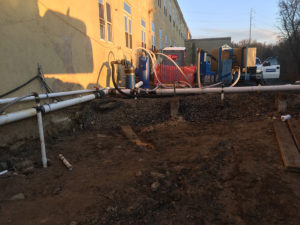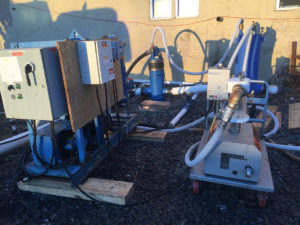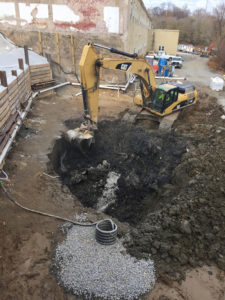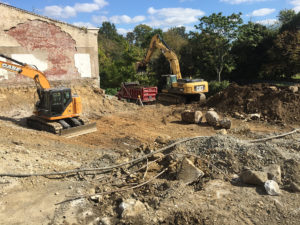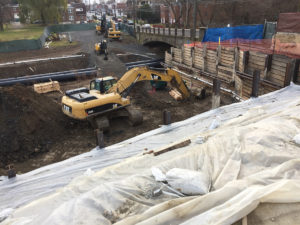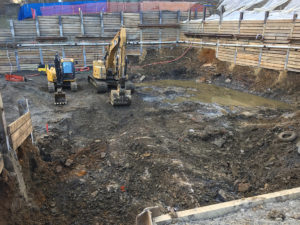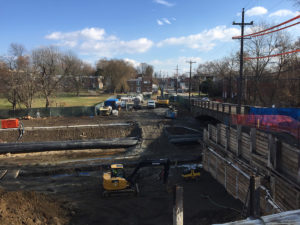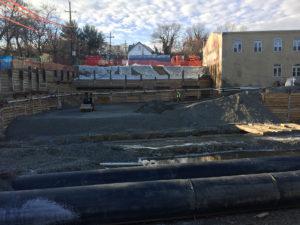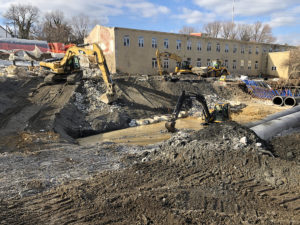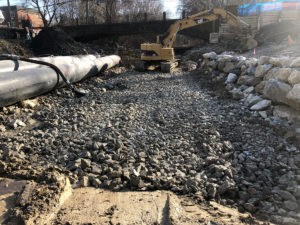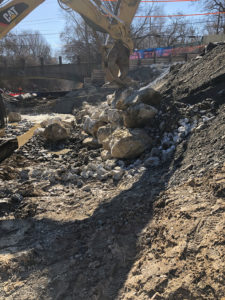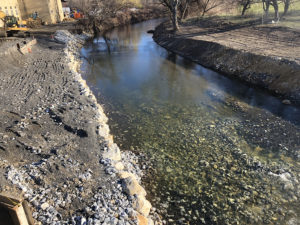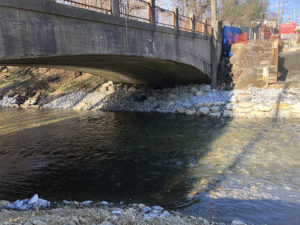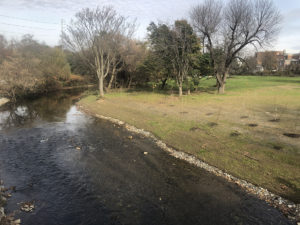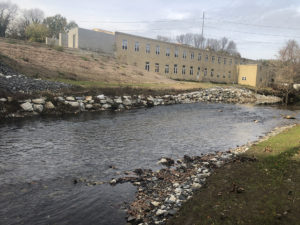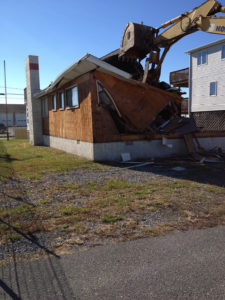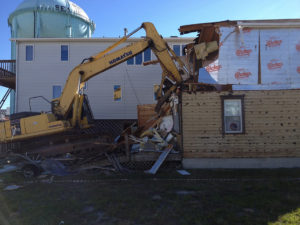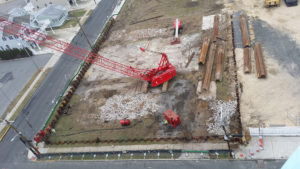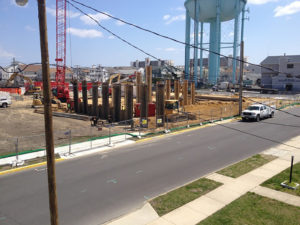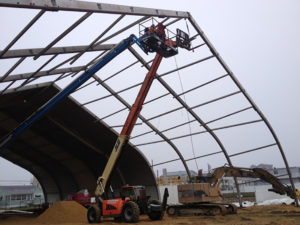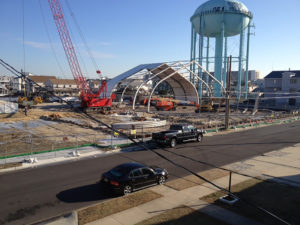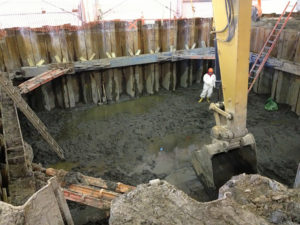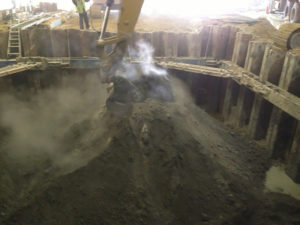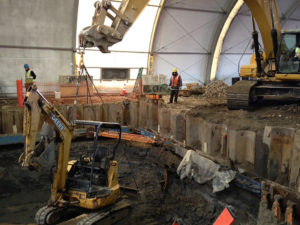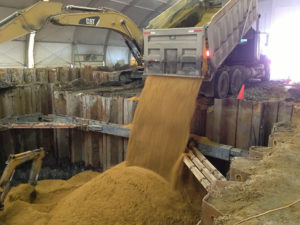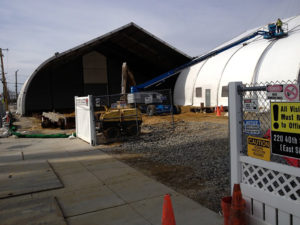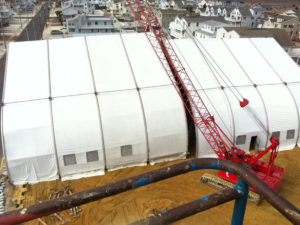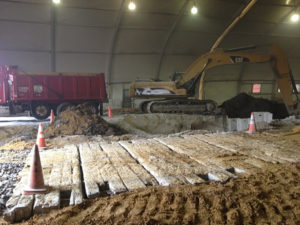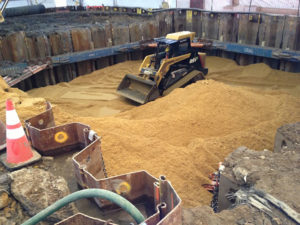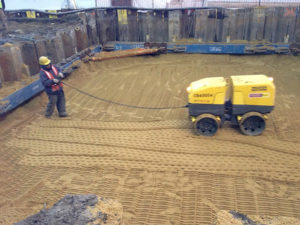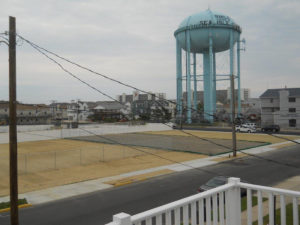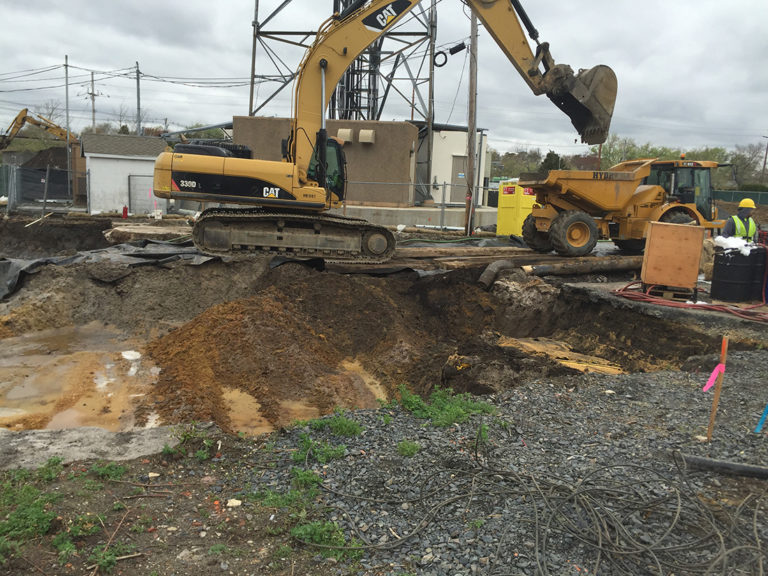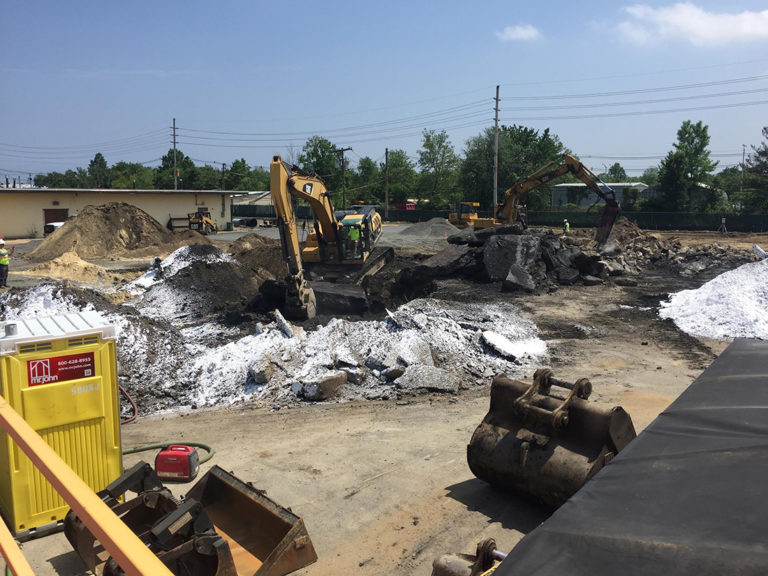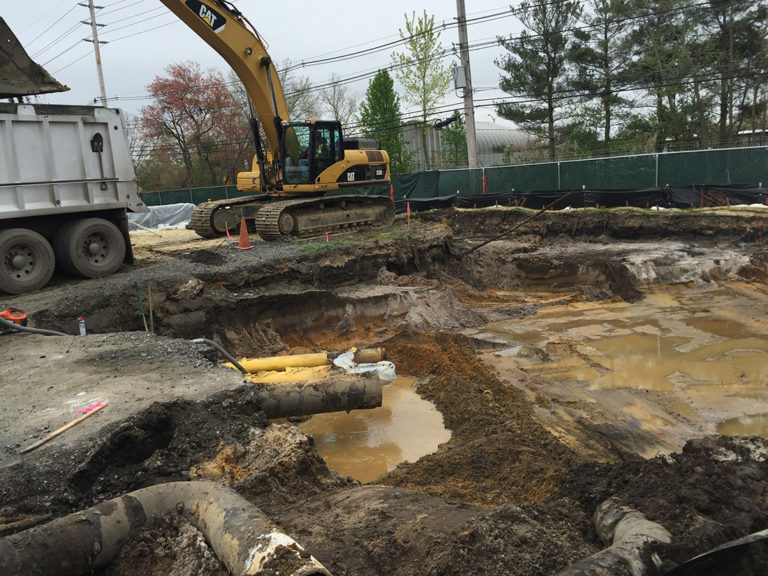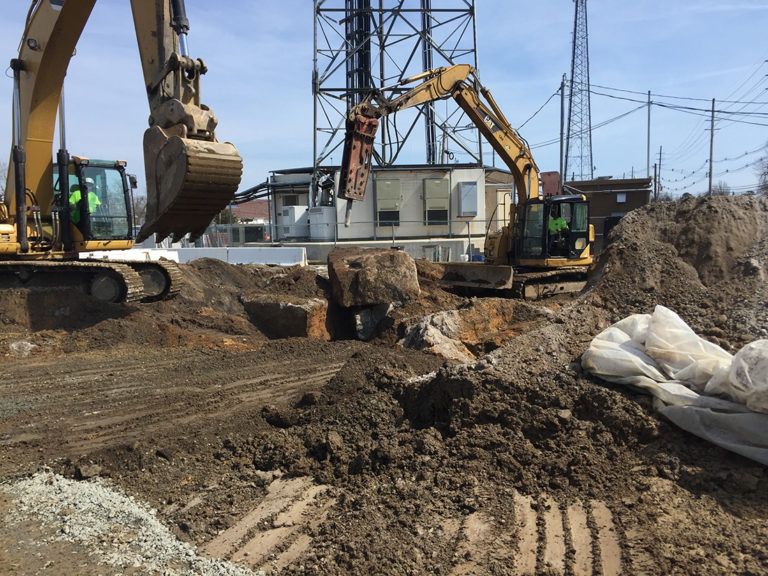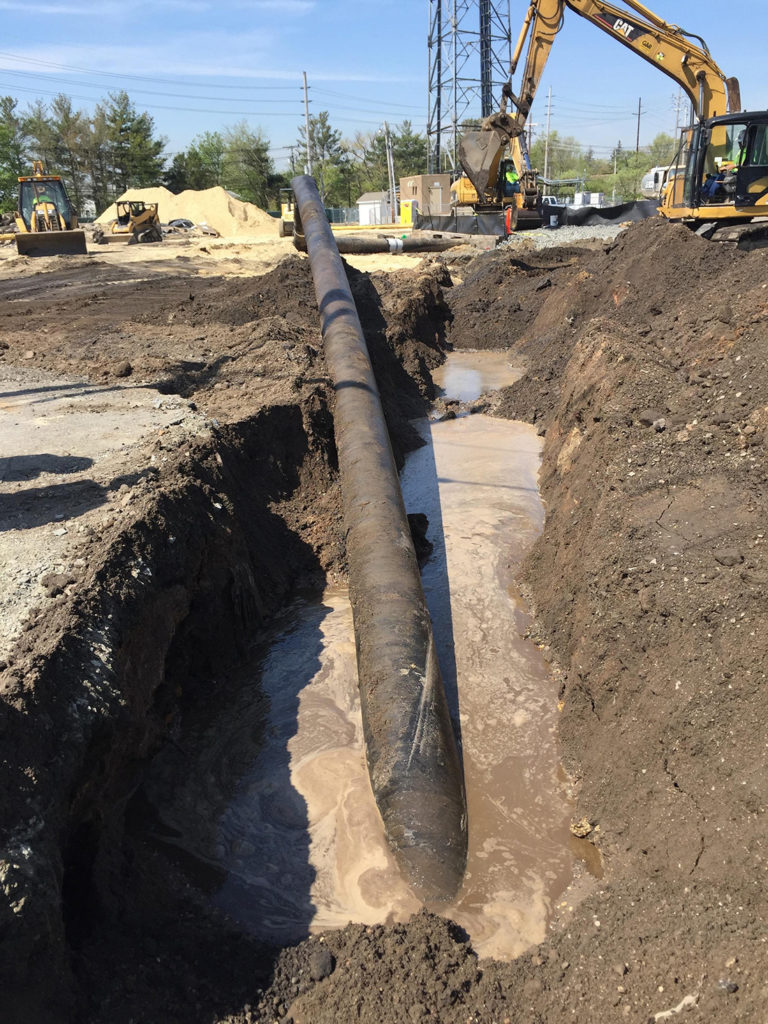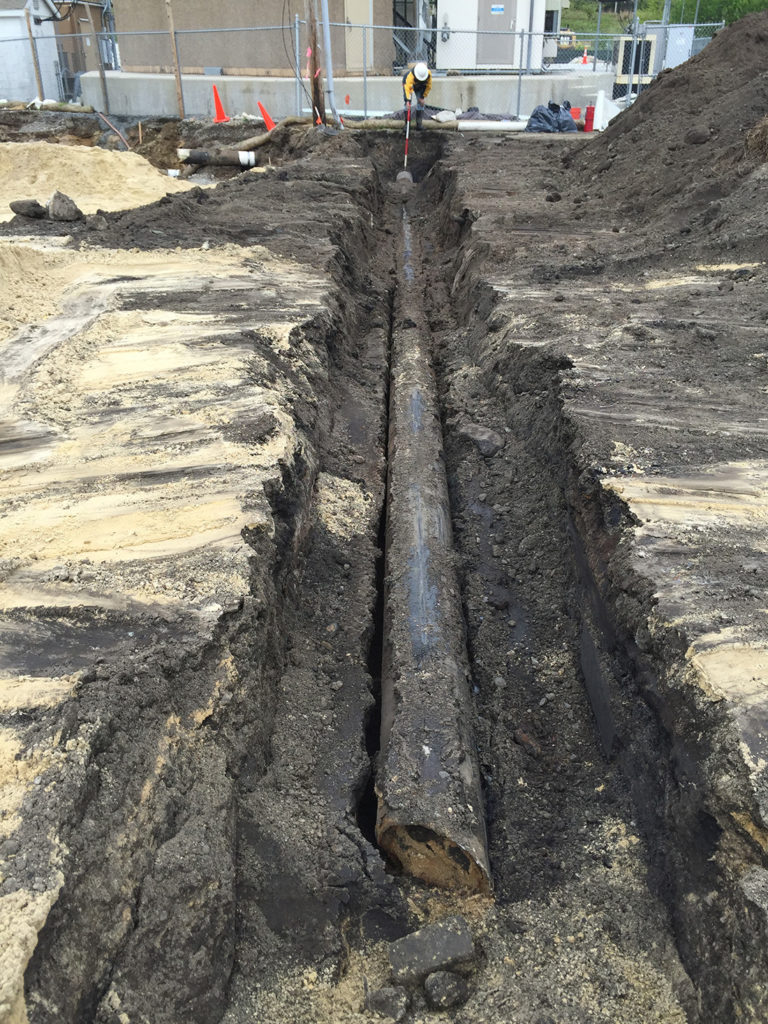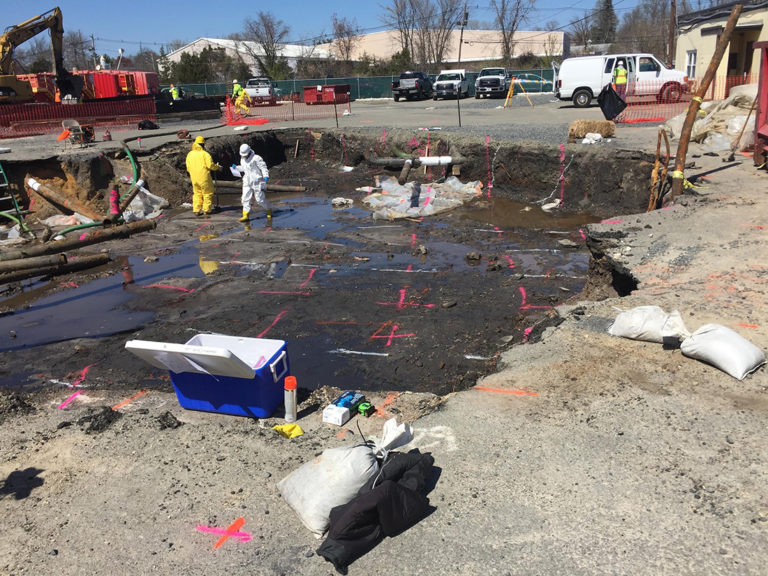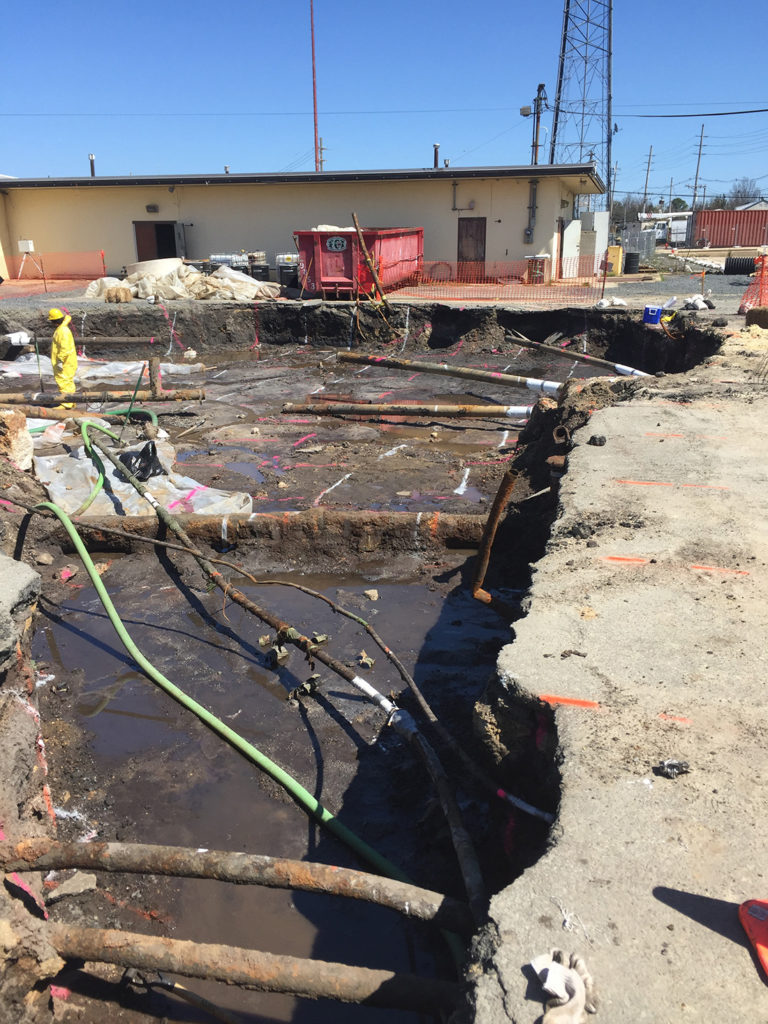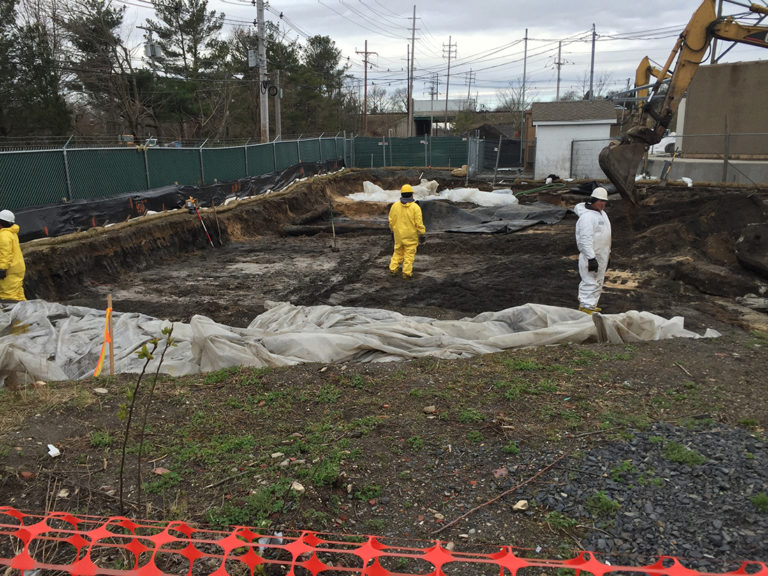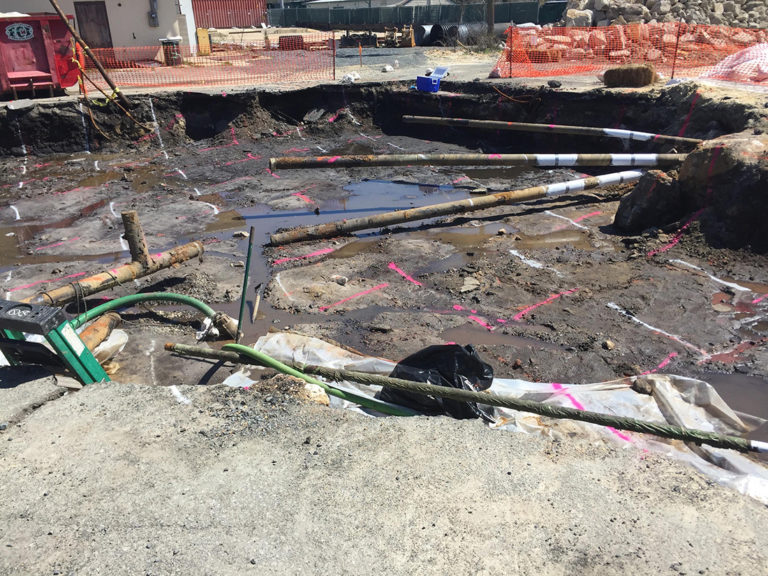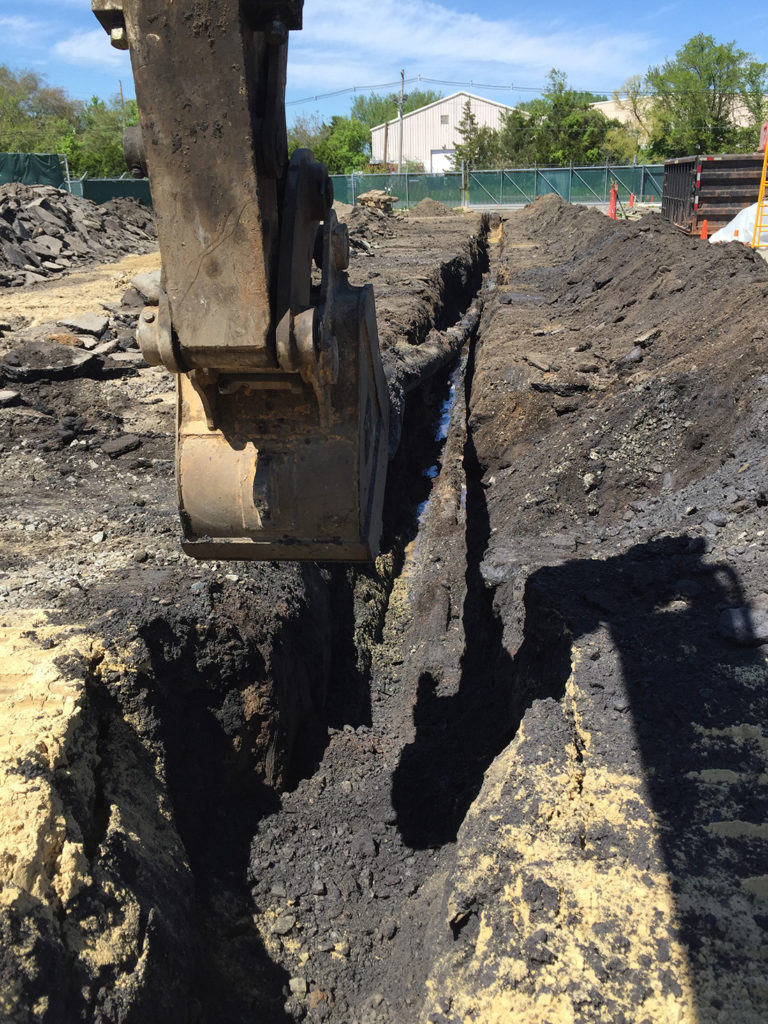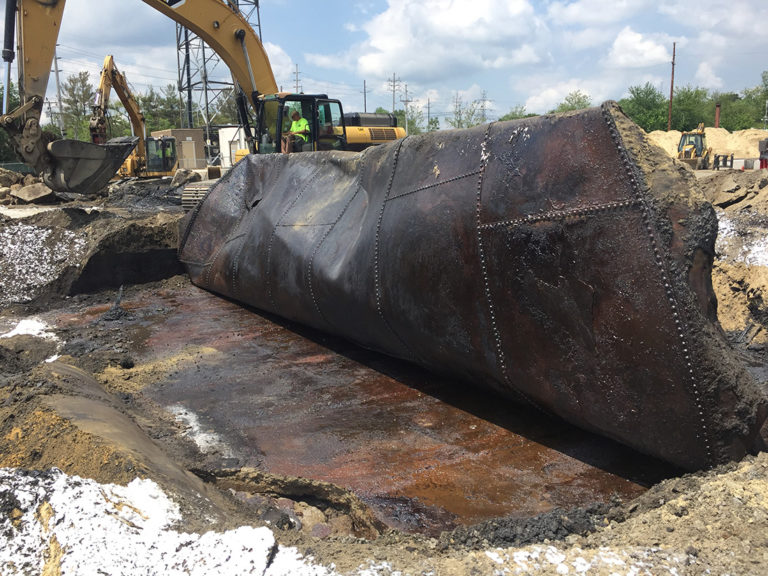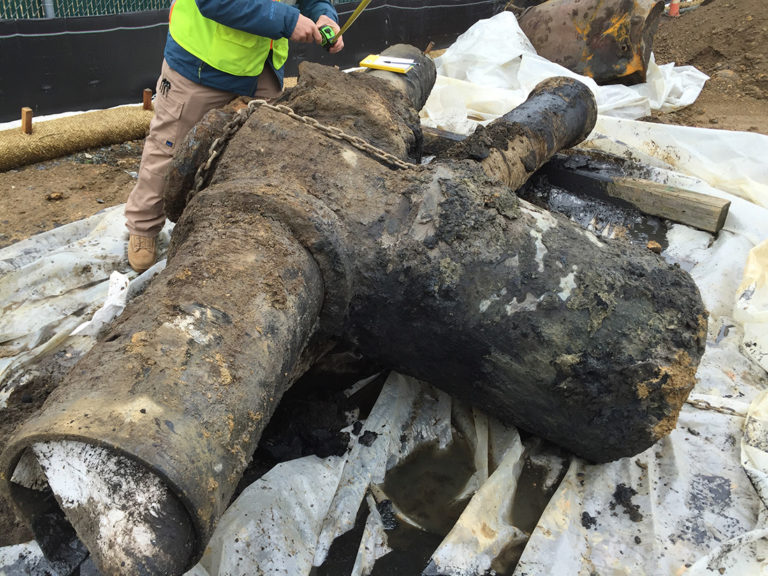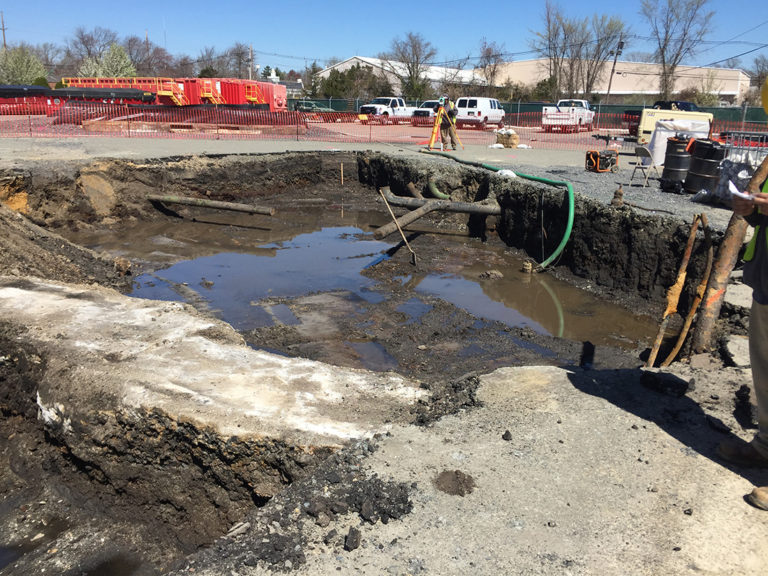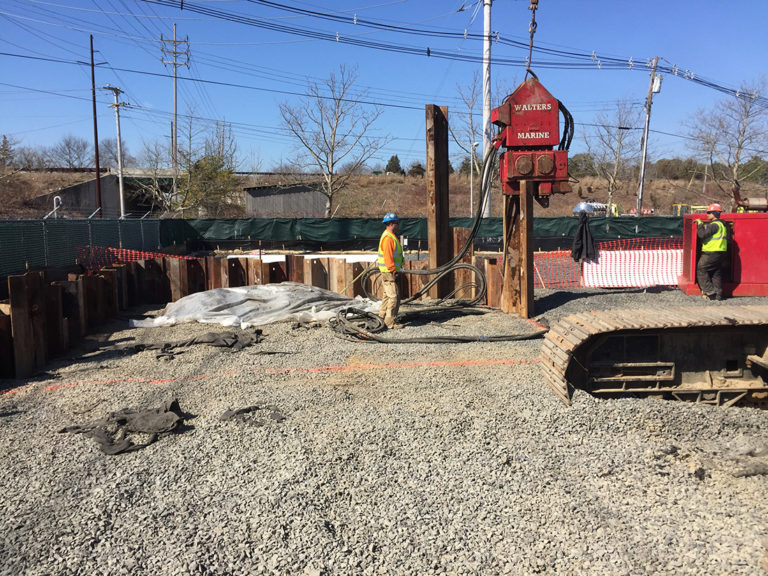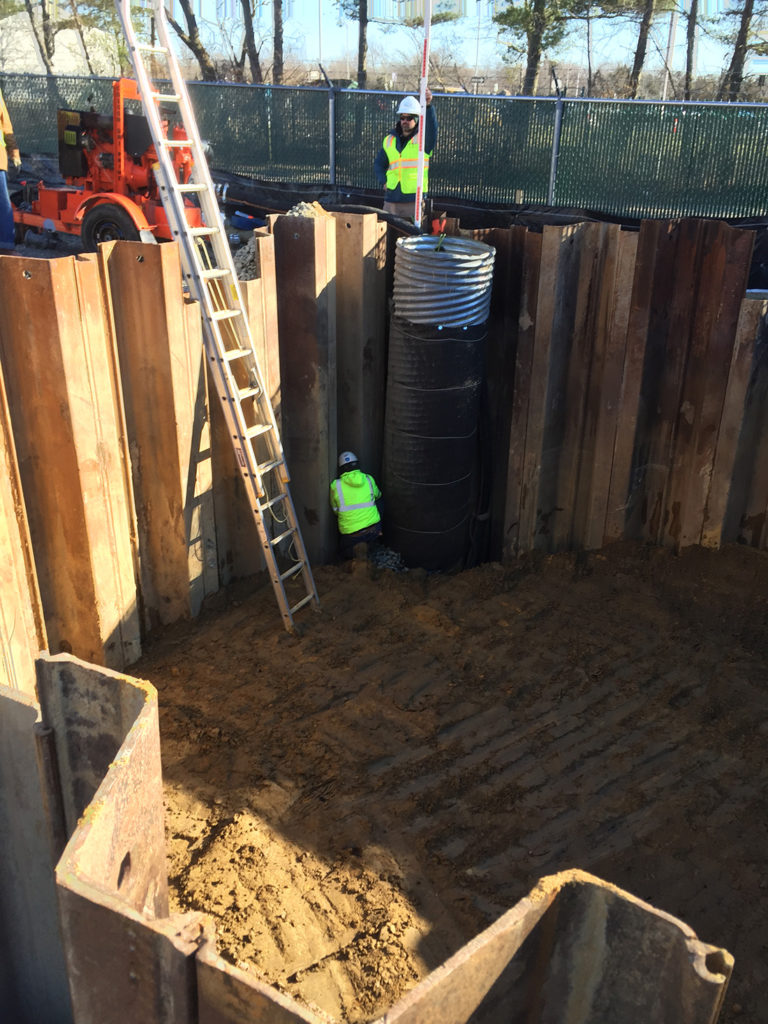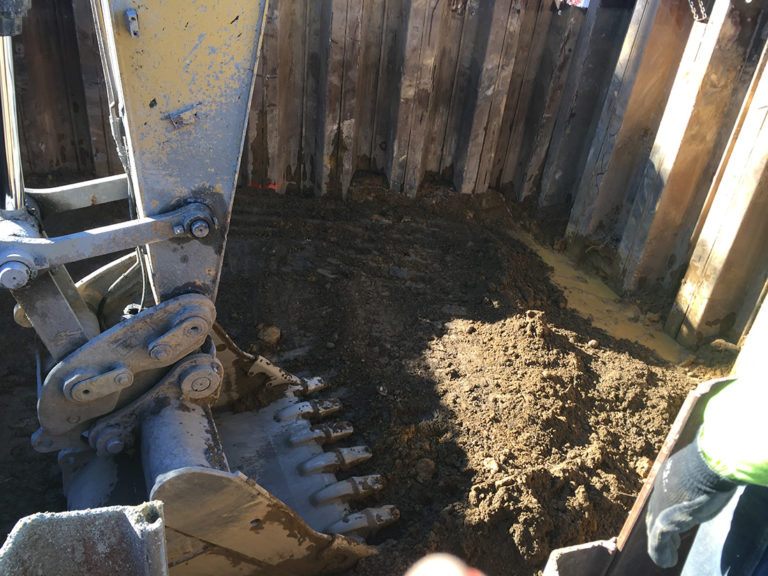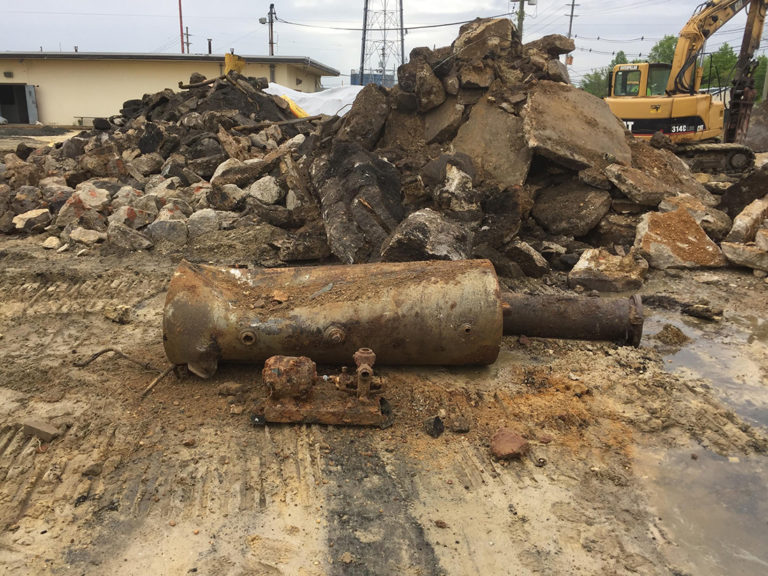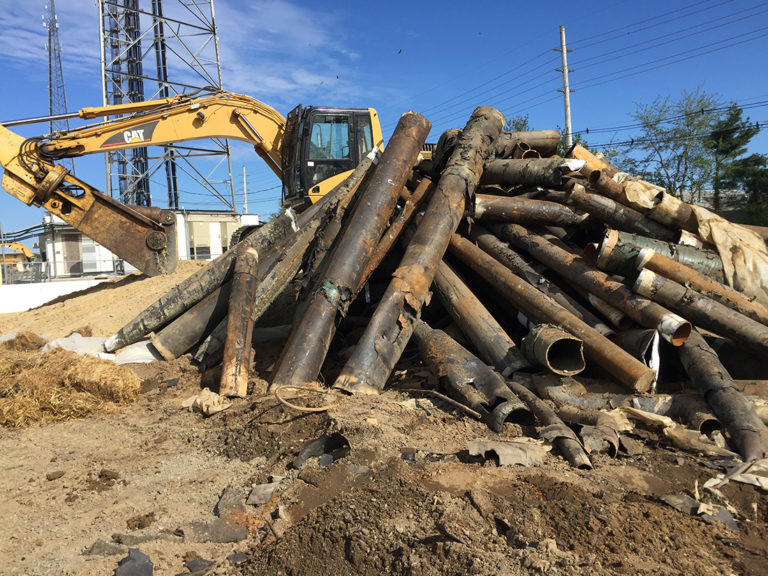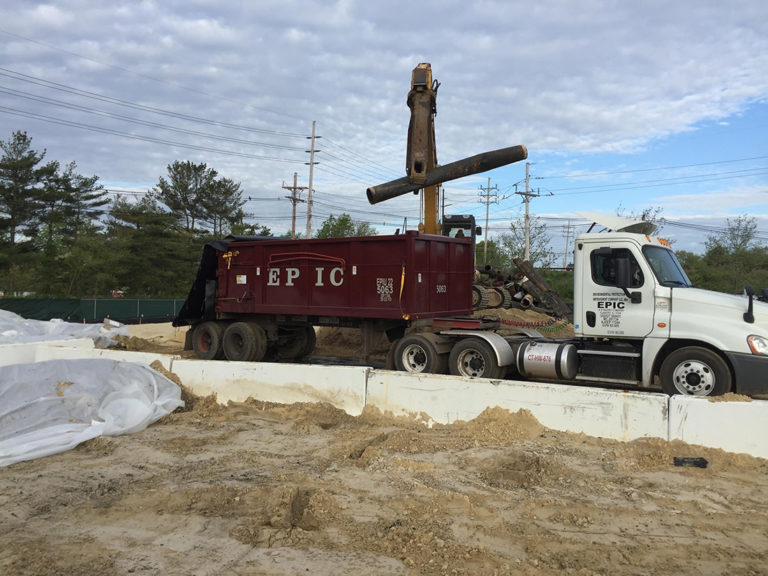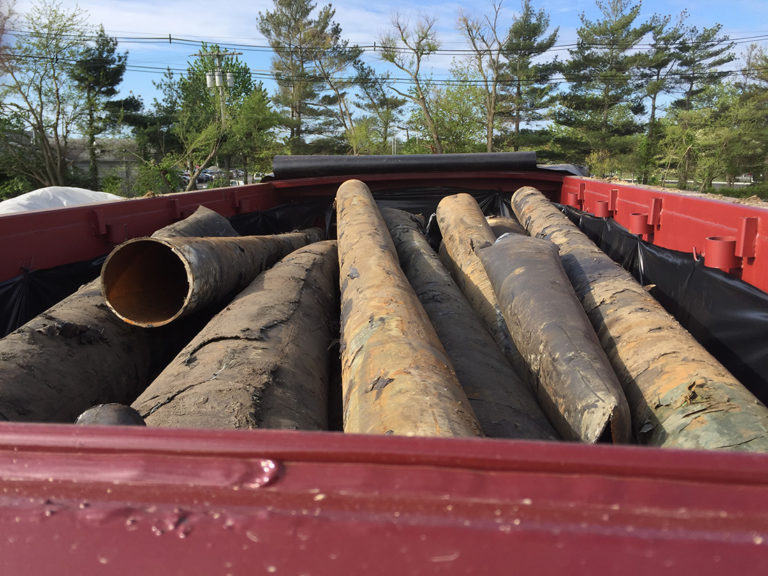Phillipsburg, NJ



Phillipsburg, NJ
Time Frame: September 2018 - February 2019
Enviro-Air was contracted to excavate and remove contaminated soil to a depth of 48 feet below ground level. In addition, EAT was required to excavate foundry sand from a 3-acre area and use that material as backfill in the excavation. A small TSCA PCB area was excavated, transported and disposed of at a hazardous waste factility. In addition, 12,000 tons of impacted soil were shipped to a Pennsylvania landfill. After the excavation was filled with the foundry sand, it was capped, and the entire 3 acres site was restored.
Darby, PA




Darby, PA
Time Frame: September 2017 - September 2018
Enviro-Air was contracted to remediate a former MGP site, located on both sides of Darby Creek in Darby, PA. Fifteen thousand (15,000) tons of MGP impacted soil were excavated and disposed of offsite at a treatment/disposal facility. The excavation along the creek involved the following:
- Installation of 6,250 square feet of soldier beams and lagging to allow for the excavation of MGP-impacted soils to a depth of 23 feet below ground surface. In conjunction with the lagging, 40 tiebacks were installed.
- Installation of a well point dewatering system, which ran 24 hours per day, seven days per week.
- Installation and operation of a water treatment plant consisting of activated carbon, bag filters, a weir tank and an 18,000-gallon frac tank.
In addition to the 15,000 tons of MGP-impacted soil that was removed from the site, EAT also excavated a 200 foot stretch of sediment from the bottom of Darby Creek (totaling 4,000 tons). The sediment excavation required the following:
- Installation of a PortaDam both upstream and downstream of the excavation area. Two 48” x 200’ HDPE pipes were utilized in conjunction with the PortaDam to allow Darby Creek to bypass the excavation area.
- Installation and operation of localized sumps to minimize water in the excavation area
- Stabilization of saturated soils with cement kiln dust
A portion of the Darby Creek sediment excavation was around a 48” sewer main, which ran perpendicular to Darby Creek. The sewer main was approximately 60 years old and carries approximately 14 million gallons of sewage per day. EAT injection grouted underneath and on both sides of the sewer main to stabilize the pipe during excavation.
This project also required extensive restoration, including the following:
- Construction of a boulder wall on top of bedrock by stacking ½ ton boulders.
- Restoration of the creek bed
- Installation of Coir matting
- Installation of live stakes, various trees, shrubs, plugs and specialty grass mixtures
EAT completed the project to the satisfaction of the Client and property owner.
Sea Isle City, NJ




Sea Isle City, NJ
Time Frame: September 2013 - May 2014
EAT was contracted to excavate, transport, and dispose of 16,000 tons of MGP impacted soil from 3 residential properties located on the barrier island of Sea Isle City, NJ. The project involved the following:
- Demolition of 3 residential properties
- Driving 33,250 square feet of steel sheet piling to create (16) individual excavation cells
- Excavation dewatering
- Onsite water treatment and discharge
- Construction of a 118′ X 164′ temporary enclosure, which utilized two air scrubbers
- Stabilization of saturated MGP-impacted soil
- Site Restoration
EAT completed the project on time and with no safety incidents.
Toms River, NJ


Toms River, NJ
Time Frame: January - June 2016
- Seven (7) waste streams were excavated, segregated and stockpiled on site including:
- TSCA PCB soil
- TSCA PCB pipe/debris
- Low level PCB soil
- Low level PCB debris
- MGP soil
- MGP pipe/debris
- Clean pipe/metal
- Excavated, transported and disposed of:
- 2,500 linear feet of underground piping
- 500 tons of TSCA PCB impacted soil, piping and debris
- 5,000 tons of low level PCB impacted soil and debris
- 800 tons of MGP impacted soil
- 180,000 gallons of MGP impacted and PCB impacted water
